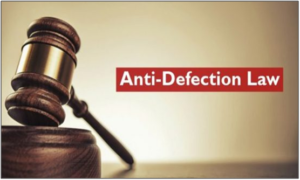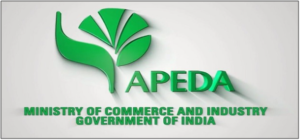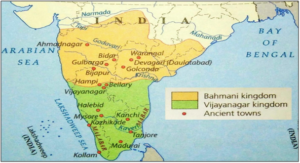Archives
(PRELIMS Focus)
Category: Polity and Governance
Context:
- The Legislature Secretariat of Telangana has summoned four more MLAs of the Bharat Rashtra Samiti (BRS) who are facing charges of defection to the ruling Congress.

About Anti-Defection Law:
- Evolution:
- In post-Independence India, frequent defections led to political instability. The phrase “Aaya Ram, Gaya Ram” became popular in the 1960s after a Haryana MLA switched parties multiple times in a single day.
- To address this issue, the Anti-Defection Law was introduced as the Tenth Schedule to the Constitution through the 52nd Constitutional Amendment, 1985.
- Objective: It aimed to stop political defections for personal gain. It applies to both Parliament and State Assemblies.
- Amendment: The 91st Amendment Act (2003) amended the anti-defection law by scrapping the one-third split provision, allowing mergers only if two-thirds of a party’s members agreed, and disqualifying defectors from holding ministerial or paid political posts until they are re-elected.
- Grounds for Disqualification:
- A member voluntarily gives up party membership (can be inferred from conduct, not just resignation).
- A member votes or abstains from voting against the party whip can lead to disqualification.
- A legislator can further be disqualified if he is an independently elected member and joins a political party.
- A nominated member is disqualified if they join a political party after six months of becoming a legislator.
- Exceptions to Disqualification:
- A party can merge with another if two-thirds of its legislators agree, with no disqualification for those who merge or stay.
- No disqualification for Speaker/Chairman/Deputy Chairman resigning from the party to remain neutral.
- Deciding authority: Disqualification cases are decided by the Speaker/Chairman. There’s no legally binding time frame for the Speaker to decide on disqualification cases, allowing for strategic delays.
- Judgements by SC:
- In Kihoto Hollohan vs Zachillhu (1992), the SC ruled that the Speaker’s decisions are subject to judicial review. This means Courts can intervene in the Speaker’s decision if there’s mala fide intent, procedural lapse, or constitutional violation, ensuring fairness and transparency.
- In Keisham Meghachandra Singh vs The Hon’ble Speaker Manipur Legislative Assembly & Ors (2020), the SC directed Speakers to decide defection cases within 3 months and suggested an independent tribunal to ensure neutrality and speed. The SC noted that delaying disqualification proceedings violates the intent of Tenth Schedule and undermines trust in the Speaker’s office by failing to uphold the standard of timely decision-making.
Source:
Category: Miscellaneous
Context:
- China has overtaken India as the most-represented location in the QS World University Rankings: Asia 2026, according to the rankings released this week.
About QS Asia University Rankings:
- Nature: The QS Asia University Rankings is an annual regional assessment that evaluates Asia’s leading higher education institutions based on academic reputation, employability, research productivity, and international outlook.
- Released by: It is compiled by Quacquarelli Symonds (QS), a UK-based higher education analytics firm, known globally for its QS World University Rankings.
- Objectives:
- To benchmark Asian universities using globally comparable indicators.
- To highlight academic excellence, innovation, and research impact in the region.
- To promote quality, global competitiveness, and collaboration in Asian higher education.
- About QS Asia Rankings 2026:
- The top 10 positions in the 2026 rankings were dominated by universities from Hong Kong, Singapore, and China.
- While India added 132 universities and institutes to the list this year, taking its tally to a record high of 294, China added 259 institutions, bringing its total to 394.
- Seven Indian institutions feature in the top 100, with the Indian Institute of Technology, Delhi, ranked highest at 59.
- China has 25 universities in the top 100, while India retained the same number of institutes in the top 100 as last year.
Source:
Category: Polity and Governance
Context:
- APEDA, under the Ministry of Commerce and Industry, Government of India, has facilitated the first export consignment of 12 metric tonnes of Fortified Rice Kernel (FRK) from Chhattisgarh to Costa Rica.

About APEDA:
- Establishment: The Agricultural and Processed Food Products Export Development Authority (APEDA) was established by the Government of India under the Agricultural and Processed Food Products Export Development Authority Act, 1985.
- Nodal ministry: It functions under the Ministry of Commerce and Industry.
- Headquarters: Its headquarters is located in New Delhi.
- Secretariat to NAB: It also functions as the Secretariat to the National Accreditation Board (NAB) for the implementation of accreditation of the Certification Bodies under National Programme for Organic Production (NPOP) for Organic exports.
- Objective: APEDA is mandated with the responsibility of export promotion and development of the scheduled products viz. fruits, vegetables and their products, meat and meat products, poultry and poultry products, floriculture and floriculture products, herbal and medicinal plants, etc.
- Conducting surveys and studies: It looks after the development of industries relating to the scheduled products for export by way of providing financial assistance or otherwise for undertaking surveys and feasibility studies, participating through subsidy schemes.
- Inspection of slaughterhouses: It carries out inspection of meat and meat products in slaughterhouses, processing plants, storage premises and improving packaging of the scheduled products.
- Composition of APEDA Authority: The APEDA Authority consists of the following members namely:
- A Chairman appointed by the Central Government
- The Agricultural Marketing Advisor to the Government of India, ex-official
- One member appointed by the Central Government representing the Niti Aayog
- Three members of Parliament of whom two are elected by the House of People and one by the Council of States
- Eight members appointed by the Central Government representing respectively, the Ministries of the Central Govt.
Source:
Category: History and Culture
Context:
- One hundred and three punch-marked gold coins dated to Vijayanagara era were found in a earthen pot around 10 kms from Jamunamarathur village atop Jawadhu Hills in Tiruvannamalai.

About Vijayanagara Empire:
- Foundation: According to tradition, the founders of the Vijayanagara Empire belonged to a family of five brothers who were feudatories of the Kakatiyas of Warangal. Founded in 1336 by Harihara I and Bukka Raya I of the Sangama Dynasty, Vijayanagara became a prominent cultural and political centre in South India.
- Capital: The capital of the Vijayanagara Empire was Vijayanagara, located on the banks of the Tungabhadra River in present-day Hampi, Karnataka.
- Polity and administration: The polity of Vijayanagar was based on the King being the power centre with a council of ministers to advise him. The kingdom was divided into Rajyas or Mandalam (provinces), which were further subdivided into Nadus (district), Sthala (sub-district) and grama (village).
- Economy: Industries like textile, mining and metallurgy flourished under the patronage of Vijayanagar rulers. The trade was brisk, and external trade with Persia, Arabia and South East Asian countries like Burma, China and Sri Lanka. Ships carried rice, iron, sandalwood, sugar and spices to these countries.
- Society: Like all the other societies of the medieval period, the Vijayanagara society was divided into three main classes – the nobles, the middle class and the common people. The nobles lived in great comfort and luxury, while the middle classes were mainly businessmen and lived in cities. The common people lived an ordinary life and were taxed heavily.
- Religion: The Sangama rulers were mostly followers of Shaivism, and Virupaksha was their family deity. Later dynasties were influenced by Vaishnavism, but Shiva continued to be practised. Srivaishnavism of Ramanuja attained high popularity. However, all kings were tolerant towards other religions and their practices.
- Art and architecture: The rulers of the Vijayanagara empire built many temples and palaces. The chief characteristics of the Vijayanagara architecture were the construction of tall Raya Gopurams or gateways, the Kalyana mandapam with carved pillars in the temple premises, the Garbhagriha and the Amman shrine.
- Literature: The Vijayanagara rulers patronised Sanskrit, Telugu, Kannada and Tamil literature. The empire was at the peak of its literary achievement during the rule of Krishna Deva Raya. Known as the ‘Andhra Bhoja’, Krishna Deva Raya wrote ‘Amuktamalyada’, a book on polity in Telugu which explains how a king should rule.
- UNESCO world heritage site: The Vijayanagar Empire’s former capital, Hampi, is a UNESCO World Heritage Site. The site comprises the remnants of the capital city from the 14th to 16th centuries CE in the Tungabhadra basin of Karnataka. It is a major tourist destination known for its ruins, including the Virupaksha Temple.
Source:
Category: History and Culture
Context:
- President Droupadi Murmu attended a special session of the Uttarakhand Assembly on Monday, where Speaker Ritu Khanduri Bhushan presented her with a Ramman mask and a book on the centuries-old festival celebrated in the state’s Garhwal region.

About Ramman Festival:
- Location: It is celebrated in the twin villages of Saloor-Dungra in Uttarakhand every year in late April.
- Deity: It is a religious festival in honour of the tutelary god, Bhumiyal Devta.
- Associated rituals: This event is made up of highly complex rituals. It includes the recitation of a version of the epic of Rama and various legends, and the performance of songs and masked dances. It features complex rituals, recitations of the Ramayana, songs, and masked dances, with each caste and group playing distinct roles.
- Emphasis on masks: There are 18 different types of masks made of Bhojpatra, Himalayan birch, that performers wear during the event.
- Community Participation: Entire village households contribute; roles are caste-based (priests, mask-makers, drum players), funding comes from the village, and participation spans elders to youth.
- Fusion of Art Forms: It blends narration, masked dances, ritual drama, music, and mask craft into one integrated festival.
- Instruments used: Some of the instruments documented include Dhol (a type of drum) Damau (smaller percussion drum), Manjira (small hand cymbals), Jhanjhar (larger cymbals), Bhankora (a kind of trumpet).
- Significance: In 2009, Ramman was inscribed in the list of UNESCO’s Intangible Cultural Heritage of Humanity.
Source:
(MAINS Focus)
(GS Paper 3: environment, climate change, global governance)
Context
- The 30th United Nations Climate Change Conference (COP30) will be held in Belém, Brazil, at the heart of the Amazon rainforest — one of the planet’s most vital carbon sinks.
- Brazil previously hosted the 1992 Earth Summit in Rio de Janeiro, which gave rise to key environmental conventions — on Climate Change, Biological Diversity, and Desertification.
- Over 30 years later, COP30 marks a symbolic “return to the Amazon,” emphasizing the urgency of global collective action to address climate change and environmental degradation.
Major Issues Discussed
- Action Beyond Speeches:
- Lula stresses that the time for promises has ended — COP30 must mark a shift from negotiations to implementation and measurable outcomes.
- Reviving Multilateralism:
- The article criticizes the paralysis of global institutions like the UN Security Council and urges reform to make climate governance more equitable and effective.
- Common but Differentiated Responsibilities (CBDR):
- Reaffirms that developed nations, who historically benefited from carbon-based growth, must lead by providing financial and technological support to developing nations.
- Global South’s Role:
- The Global South demands fair access to resources and climate finance as a matter of climate justice, not charity.
- Amazon as a Symbol of Hope:
- Brazil aims to halve deforestation and restore forests, showcasing that concrete climate action is possible when backed by policy commitment.
Brazil’s Initiatives and Commitments
- Tropical Forests Forever Facility (TFFF):
- An innovative investment-based initiative (not a donation mechanism) rewarding countries and communities that preserve forests.
- Brazil announced a $1 billion initial investment, inviting global participation.
- Nationally Determined Contribution (NDC):
- Brazil aims to reduce its greenhouse gas emissions by 59–67% and cover all sectors of the economy under climate goals.
- Energy Transition:
- Brazil’s energy matrix is already 88% renewable, primarily hydroelectric and biofuels.
- The country is investing in solar, wind, and green hydrogen to lead the global energy transition.
- Social Dimension:
- Brazil will launch a ‘Declaration on Hunger, Poverty, and Climate’ at COP30, linking climate action with social equity and the fight against hunger.
Key factors analysis
- Environmental Dimension
- COP30’s location in the Amazon symbolizes the intersection of climate and biodiversity goals.
- Reforestation and halting deforestation are central to both mitigation and adaptation efforts.
- The TFFF model encourages sustainable financing rather than dependency on aid.
- Economic Dimension
- Transitioning away from fossil fuels will have economic trade-offs, especially for developing countries dependent on oil revenue.
- Investment-based mechanisms (like TFFF) may attract private capital but could exclude poorer nations unable to compete.
- A just and equitable energy transition must include redistribution of technology and finance.
- Political and Governance Dimension
- Calls for UN institutional reform reflect frustration with current climate governance gridlock.
- The emphasis on CBDR and Global South cooperation could redefine global climate politics.
- Brazil seeks to position itself as a leader of the developing world in shaping a fairer climate order.
- Social and Ethical Dimension
- Recognition that climate change disproportionately affects the poor and vulnerable is vital.
- Linking hunger eradication and poverty reduction to climate policy represents a holistic sustainable development approach.
Pros
- Strengthens South-South cooperation and leadership from developing nations.
- Promotes climate justice and reaffirms the CBDR principle.
- Highlights a model (TFFF) combining economic incentives with ecological preservation.
- Encourages integration of climate, poverty, and hunger agendas.
- Could rejuvenate faith in multilateral environmental agreements.
Major Challenges
- Implementation may be hampered by lack of global consensus and political will.
- The investment-based model could face issues of accountability and equity.
- Deforestation and agribusiness pressures remain strong within Brazil’s domestic politics.
- Developed nations’ failure to deliver promised climate finance could undermine trust.
- Risk of COP30 being symbolic rather than transformative if major powers avoid concrete commitments.
Way Forward
- Strengthen global governance to ensure accountability and transparency in climate commitments.
- Enhance technology transfer and capacity building for developing nations.
- Prioritize local communities and indigenous participation in Amazon conservation.
- Ensure integration of climate goals with social justice and economic resilience.
- Move from pledges to performance, making COP30 the “COP of Truth” that Lula envisions.
Main Practice Question
Q: COP30 in Brazil has been termed the “COP of Truth.” Discuss the significance of hosting it in the Amazon region, and critically examine how it reflects the evolving dimensions of global climate governance, equity, and sustainable development. (250 words)
(GS Paper 3: Sci & Tech, innovation, GS Paper 2: Governance, GS Paper 4: ethics in governance)
Context
- The Ministry of Electronics and Information Technology (MeitY) has launched the IndiaAI Governance Guidelines under the IndiaAI Mission to establish a comprehensive framework for the ethical and responsible deployment of Artificial Intelligence (AI) across sectors.
- The guidelines, prepared under the supervision of the Principal Scientific Adviser to the Government of India, advocate a phased governance model emphasizing transparency, fairness, accountability, and inclusion.
- This move comes amid growing global concerns over AI misuse — including deepfakes, data bias, misinformation, and threats to privacy and employment.
- India aims to create a techno-legal regulatory structure that balances innovation with safeguards and accountability.
Key Features of the AI Governance Guidelines
- Phased Implementation:
- Instead of abrupt regulation, a gradual governance model is proposed, allowing adaptation to technological evolution.
- Creation of Oversight Bodies:
- Proposal for new institutions such as:
- AI Safety Institute – to oversee AI safety and standards.
- AI Technology & Policy Expert Committee – to coordinate policy and risk management.
- AI Governance Group – to harmonize sectoral AI regulations and standards.
- Proposal for new institutions such as:
- Risk-Based Classification Framework:
- AI applications to be categorized by risk levels (low, medium, high).
- Ensures proportional safeguards based on societal impact.
- Incident Reporting Systems:
- Mechanisms for mandatory reporting of AI-related failures or ethical breaches.
- Regulatory Mechanisms:
- Encourages “automatic by design” compliance — embedding ethical safeguards directly in AI systems.
- Promotes “techno-legal” governance integrating technology tools with legal oversight.
- Integration with Existing Laws:
- Aligns with Information Technology Act, Bharatiya Nyaya Sanhita, and Digital Personal Data Protection (DPDP) Act.
- Addresses misuse of AI (e.g., deepfakes, data theft, misinformation).
- Seven Principles for AI Governance:
As recommended by IIT Madras-led committee:- Fairness
- Accountability
- Transparency
- Explainability
- Privacy
- Equity and Inclusivity
- Innovation Orientation
Government’s Approach
- IT Secretary S. Krishnan emphasized a “deliberate, innovation-first approach”, ensuring regulation evolves with technology.
- The government does not prioritize strict regulation initially but remains ready to act decisively if misuse arises.
- Focus on human-centric development and trustworthy AI ecosystems underpins the initiative.
Multidimensional Analysis
- Technological Dimension
- Promotes creation of a national AI safety architecture to prevent bias, manipulation, or malfunction.
- Encourages interoperability, open standards, and responsible innovation.
- Advances India’s position in the global AI governance discourse, competing with frameworks like the EU AI Act and U.S. AI Executive Order.
- Legal and Ethical Dimension
- Embeds principles of accountability and transparency, ensuring explainability of AI decisions.
- Integrates with existing Indian laws, avoiding duplication and ensuring coherence.
- Encourages ethical auditing of AI systems to prevent bias or discrimination.
- Economic Dimension
- Boosts AI-driven innovation and startups by offering regulatory clarity and predictability.
- Encourages public-private partnerships and investments in safe AI infrastructure.
- However, excessive compliance could increase costs for smaller firms if not balanced.
- Social and Governance Dimension
- Promotes inclusion and trust in technology, essential for democratic legitimacy.
- Aims to prevent misuse of AI in elections, misinformation campaigns, or social profiling.
- Calls for capacity-building within government and society for AI literacy.
- International Dimension
- Aligns India with global AI governance trends — focusing on ethics and human-centric innovation.
- Strengthens India’s role in forums like G20, OECD, and UN AI initiatives.
- Offers a non-Western model of AI regulation rooted in developmental priorities and digital sovereignty.
Pros
- Comprehensive and Balanced: Integrates ethics, innovation, and inclusivity without stifling progress.
- Proactive Governance: Moves ahead of potential crises like deepfakes and AI misinformation.
- Techno-Legal Approach: Combines digital design safeguards with legal mechanisms.
- Focus on Trust: Encourages citizens’ confidence in AI systems through transparency.
- Alignment with Data Protection Laws: Complements India’s DPDP Act, ensuring holistic digital regulation.
Challenges
- Implementation Gaps: Lack of skilled regulators and AI audit infrastructure may slow adoption.
- Fragmented Oversight: Multiple committees could create overlapping jurisdictions.
- Innovation vs Regulation Balance: Over-regulation may deter startups and innovation ecosystems.
- Global Compatibility: India’s standards must align with international norms to ensure cross-border AI deployment.
- Ethical Ambiguity: Practical enforcement of fairness or explainability remains complex and subjective.
Way Forward
- Develop AI literacy programs for administrators and citizens.
- Encourage independent audits and public transparency reports by AI developers.
- Strengthen collaboration between academia, industry, and civil society in policy design.
- Establish international partnerships for AI safety research.
- Ensure continuous review and adaptive governance as AI technologies evolve.
Conclusion
India’s AI Governance Guidelines represent a critical step toward building a trustworthy and inclusive AI ecosystem. Rather than imposing premature restrictions, the framework focuses on ethical design, human oversight, and responsible innovation.
By blending technological pragmatism with democratic accountability, India aims to set a model for the Global South in managing the dual promise and peril of Artificial Intelligence.
Main Practice Question
Q: Discuss the significance of India’s new AI Governance Guidelines in shaping a responsible and inclusive AI ecosystem. How can India balance innovation with ethics and regulation in the evolving landscape of Artificial Intelligence? (250 words)
Source : https://epaper.indianexpress.com/4076464/Delhi/November-06-2025#page/15/2
